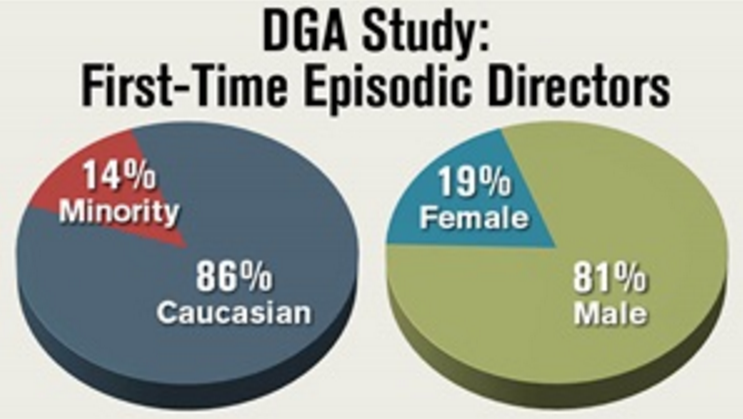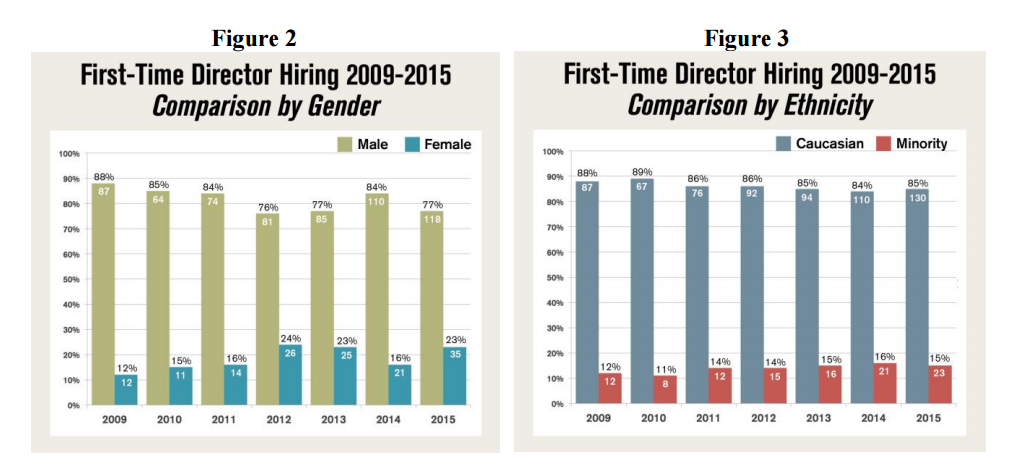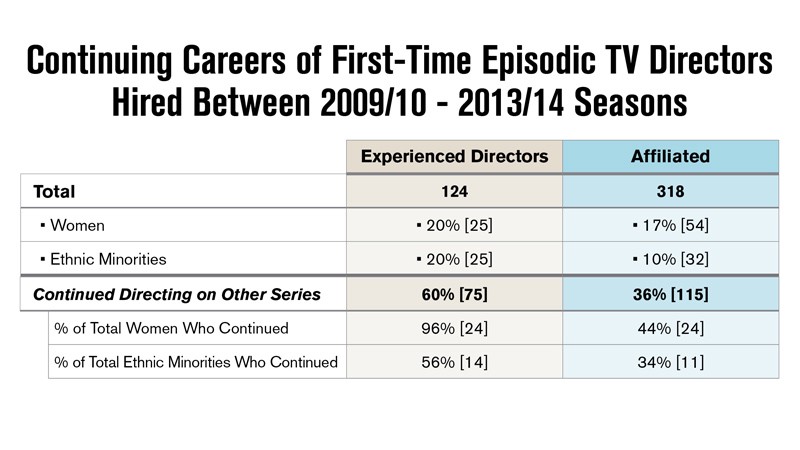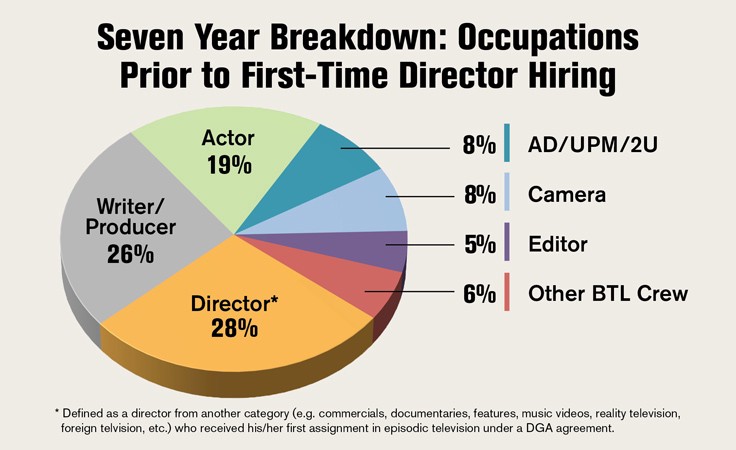
The Directors Guild of America (DGA) has released the results of an annual study on the gender and ethnic diversity of directors who received their first assignments in episodic TV and the numbers are predictably dismal.
In essence, the study found that 81 percent (619) of all first-time episodic directors during the seven-year span of 2009/10–2015/16 were male and only 19 percent (144) were female. 86 percent (656) were Caucasian while just 14 percent (107) were minority directors.
Of the 153 directors who had never worked in episodic television and were hired by employers (studios, networks, and executive producers) in the 2015–16 season, 15 percent were ethnic minorities, and 23 percent were women.

A comparison of the data from previous years shows that the “hiring of minority first-time TV directors has remained flat over the past seven seasons,” the official report reads, but that “there was a slight upward trend in the season-by-season hiring of women first-time directors — though it has fluctuated within the same range since 2012.”
The report noted that the fluctuation was caused by the varying number of first-time directors in any given year: “For example, in the last three years alone, hiring of women first-time TV directors fell from 23 percent to 16 percent, then rose back up to 23 percent. When examining the data by season, it is important to note the small group size, which is more sensitive to fluctuation. With just 99 total first-time directors in 2009–10, and 153 in 2015–16, a handful of individual hires can impact the percentage in either direction.” It’s also interesting to note that there is a sizable increase in job opportunities due to new platforms, yet we haven’t seen the same sizable jumps in women or minorities being hired.
The study also followed the career trajectories of first-time directors who were initially hired between the 2009/10–2013/14 seasons to find out if they were then hired for further directing jobs. This portion of the study was divided into two sections, with 26 percent (124) categorized as “experienced directors” (meaning they’d previously directed in feature films, commercials, or online) and the majority 66 percent (318) being “affiliated hires” (individuals associated with the series as actors, crews, editors, writers, etc.).

Unsurprisingly, the “experienced directors” were more likely to develop further TV directing careers, but perhaps surprisingly, this group, the DGA says, was also slightly more diverse than the “affiliated” group, though still small, at 20 percent for both women and ethnic minorities.
Though if the “affiliated hires” group was less diverse, that may be the result of the on-set “boys club” that so many female directors mention. If white men only work with white men, then white men are who they end up promoting and doing favors for. Which is supported in the next set of numbers, which shows that the women and minorities of the “experienced group” had more success than their “affiliated” counterparts: “96 percent of women (24 out of 25) and 56 percent of ethnic minorities going on to direct on other series, compared with just 44 percent of women and 34 percent of ethnic minorities in the affiliated group.”
The trouble with the “affiliated” group was directly addressed by Bethany Rooney, co-chair of the DGA Diversity Task Force. “To change the hiring pool, you have to change the pipeline. Year after year when we put out our TV director diversity report, the media and public are stunned that the numbers remain virtually the same,” said Rooney. “But how can it change when employers hand out so many first-time director assignments as perks? If they were serious about inclusion, they would commit to do two simple things: First, look around and see that there’s already a sizable group of experienced women and minority directors ready to work and poised for success — and they would hire them. And second, they would more carefully consider these first-time directing jobs, and develop merit-based criteria for them — with an eye toward director career development. In the end, it’s all about who is a good director.”
Being a good director should be the only thing that matters, but studies have shown again and again that women and minorities are getting the shaft in Hollywood. Hopefully, pointing out these numbers and studies can be the proof that people need to encourage change.
This report precedes the DGA’s annual TV director diversity report, covering the 2015–16 season, which will be published later.







